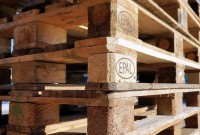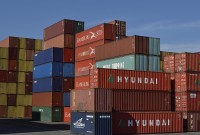- Home
- Business Processes
- Industry Knowledge
- Aerospace Industry
- Automotive Industry
- Banking Domain
- BFSI Industry
- Consumer/ FMCG Industry
- Chemicals Industry
- Engineering & Construction
- Energy Industry
- Education Domain
- Finance Domain
- Hospitality Domain
- Healthcare Industry
- Insurance Domain
- Retail Industry
- Travel and Tourism Domain
- Telecom Industry
- Leadership Skills
- eLearning
- Home
- Business Processes
- Warehouse Management
- Warehouse Staffing & Roles
Warehouse Staffing & Roles
Resource Planning is the process of planning for expected workload and determining the number of resources required to complete each activity in the warehouse. There are many types of warehouse positions, and they also vary by the employer, the scale of operations and location. Discussed here are generic positions applicable to warehouse management processes.
Warehouse Resource Planning
Resource Planning is the process of planning for expected workload and determining the number of resources required to complete each activity in the warehouse. Having visibility to expected resources enables a warehouse to accurately plan for overtime, temporary staffing, moving demands to different dates, and so forth, thus optimizing the resource costs.
- A resource pool defines a set of resources that perform similar operations in the warehouse. A resource pool is an aggregate collection of resources.
- Example of activities for resource pooling are weighing, picking, packing, shipping, etc.
- Each resource pool is associated with a certain type of activity and has one or multiple resources allocated to it.
- For each planned activity resource pool should be determined, for example for shipping activity, resource pool is needed for doing the activities of picking, packing, manifesting, and shipping.
- The capacity for each resource pool is calculated taking various factors into account, like efficiency of workforce and shift timings.
- When there is a shortage of resources in the warehouse for completing the planned activity, the outbound supervisor or warehouse manager resolves the shortage by moving resources from other resource pools.
- He may decide to extend the shift timings by few hours or re-plan few shipments to a future date.
Roles & Responsibilities in Warehouse
There are many types of warehouse positions, and they also vary by the employer, the scale of operations and location. Discussed below are generic positions applicable to warehouse management processes.
General Labor
- They generally have to do physical jobs of cleaning, housekeeping, and carry the stock and keep at places where they are instructed.
- Physically demanding jobs that include standing and walking the entire day.
- Basically, they have to follow the orders of seniors to do menial jobs.
- Have to be on their toes because in the warehouse anything can come up anytime.
Forklift Driver/Operator
- Loading and unloading trailers
- Well operating a motorized machine is in itself a challenge because it requires precision.
- Operate motorized vehicles like all sorts of forklifts to transfer pallets of stocks, materials, and other sorts of supplies to different areas like shipping areas, assembling areas, and storage areas
- If you don’t lift the freight efficiently then there’s a chance of products getting imbalanced and fall off
- It is helpful to have the skills to operate multiple types of forklifts including counterbalance forklifts, sit down forklifts, stand up forklifts, cherry-pickers, and clamp and reach forklifts
- The person has to know a bit of mechanics so that he/she can rectify small problems in the machine
- Palletize and stage stocks
- Carry orders from warehouse racks
Material Handler
- To effectively handle materials both physically or with the help of motorized equipment like forklifts.
- Has to have knowledge of computer operations and mechanical equipment both.
- Generally, these types of positions need the ability to set up and operate forklifts to move materials around the warehouse racks and into the productions to get the product ready.
- Physically demanding job because sometimes you need to move material physically as well
- Computer operating skills, counting, and inventory tracking skills are also crucial so that you can log information about materials and items.
- Inspect material handling equipment and troubleshoot mechanical issues.
Shipping and Receiving Associate
- Processing inbound and outbound shipments
- Multitasking is a challenge in this job because one has to manage many tasks at once.
- Loading or unloading pallets
- One has to have a knowledge of managing orders and receiving the shipments.
- Pulling & preparing orders • Tedious job
- Maintaining & organizing shipping, receiving, and storage areas.
- Collect ordered material from the bins they are kept in
- Receive and sequence pulling orders
- Count inventory & inspect material for quality
- Pack shipping containers or boxes
- Track orders and document work
Shipping Specialist
- Be informed about online retail shopping technologies.
- The main challenge is to reduce shipping cost and other expenditures that are caused due to errors
- Track live orders and fulfill orders and update inventory.
- Completion of order picking and shipping in time
- Ensure that the orders are packed and prepared for shipment for online retail customers.
- Ensure that the correct orders are shipped without any discrepancies
- Maintain stock levels for shipping supplies.
- Provide reports to management about the errors in the shipments, recalled shipments, returns and replacement shipments, and loss of products.
- Review products for quality control purposes.
- Reviewing and finalizing shipping costs and reducing unnecessary expenses caused due to errors and inefficiencies in the shipping process.
- Achieving the completion of order picking in designated shipping time
Loader
- Assemble the required orders and prepare equipment for delivery before loading
- Avoiding the errors of assembling the wrong products.
- Process all incoming materials for receiving and check-in.
- Using and managing equipment properly so that the products are loaded or unloaded efficiently
- Receive, displace, and issue all products, selecting appropriate tools to load and unload the freight.
Merchandise Pickup/Receiving Associate
- Unpacks received merchandise from vendor boxes
- Multitasking is a challenge
- Remove merchandise from packages to be kept in the warehouse after placing the sensors on goods according to MSS standards.
- Understanding the needs of the inventory in the correct way so that you can inform the seniors about the on-ground issues. You lose to notice one fault and that fault can cause huge problems.
- Place merchandise on racks to be taken to the selling floor
- Checking the received goods discretely because the receiver is the first one to be in contact with the received goods
- Assist the Merchandise Team in the placement of merchandise received through shipment
- Help the Merchandise Team in the movement of fixtures and merchandise for the new products, season changes, and clearance sales.
- Takes care of damages, transfers, and return to vendor merchandise
- Help in the replenishment of stocks
- Help in inventory and markdown processes
- Responsible for stockroom maintenance, organization, and housekeeping as well
- Make sure all the processing and receiving processes are completed according to the productivity standards timelines
Receiver
- Receive shipments after checking them for damages
- Understanding planograms efficiently and distribute the goods accordingly
- Sort stock for and distribute it in the store
- There is a tendency to commit errors in recording the details and making invoices and hence this job needs the person to be attentive.
- Save the invoices sent and received for further references
- Ability to think quickly and resolve issues
- Prepare orders by taking items from the warehouse and get them ready for delivery.
- Need physical ability to bend and lift heavy boxes
- Monitor shelves and keep a record of empty and occupied shelves
- Ability to read planograms and set up merchandise and displays accordingly
- Be informed about the movements of the merchandise through the store and warehouse.
- Review, understand, and follow planograms to set up store displays or merchandise arrangements to maximize sales.
- Raising purchase orders when inventory is low and also purchase packing and shipping supplies when needed
- Work with suppliers to resolve any shipping issues.
Warehouse Worker
- Welcome delivery trucks and receive and track shipments.
- Need experience with inventory and logistics software programs and excel sheets
- Help in loading products on trucks with the help of appropriate tools.
- And the other challenges are the same as the other employees
- Track and note exact arrival and shipment times
- Tag and label and stockpile merchandise according to size, shape, and type.
- Packing merchandise as per the needs of each product.
- Assist in preparing orders for shipments and record and manage the damaged or obsolete items
- Able to operate motorized equipment of warehouse when needed
- Update data in the warehouse management software and other types of software
Stock Clerk (Stocker)
- Accept delivered shipments and ensure the quantity is as agreed.
- Has to manage products and decide about the identification codes that will be most easy to identify
- Get the merchandise unloaded • Allot the prices decided to each and every product and make sure that the correct prices are allotted
- Get the items marked with identifying codes like prices, barcodes, SKUs and etc.
- Has to be able to handle customer’s communications with precision so that the correct order is packed and shipped
- Ensure that stock is shelved appropriately.
- Basically managing the stock with high efficiency so that there are fewer returns and increased perfect order percentages.
- Ensure the labels are clear and easy to read or identifiable.
- Help customers fill orders.
- Manage customers’ mail, web, and phone orders by retrieving the ordered merchandise.
- Calculate the price of the merchandise.
- Keep records of sales and manage warehouse management system and other software
- Initiate replenishment and prepare merchandise for shipment.
- Track and make sure that customers get their products on time
- Return and replace damaged or missing products.
- Sometimes able to operate a forklift to lift or place merchandise.
- Coordinate with sales and marketing people to optimize and manage inventory and orders.
Warehouse Supervisor
- Writing or generating reports about shipments and inventory levels to be shared with warehouse managers
- Managing the employees and making them work efficiently.
- Putting labels on goods; maintaining the storage area; and, replenishing work supplies.
- And ensuring the warehouse performs at an optimum level.
- The major role of a warehouse clerk is to receive, organize, overlook, and maintain the stock available in the warehouse.
- Make sure the strategies designed by the managers and top management are implemented properly.
- Packing orders, stocking shelves, unloading deliveries, and managing stock records.
Warehouse Manager
- Ensuring that all the tasks of warehouse-like receiving, warehousing, and distribution operations are carried out efficiently by initiating, coordinating, and enforcing strategies, operational protocols, individual policies, and procedures.
- Coming up with new strategies and new technologies to reduce errors, and ensure that all KPIs are at an optimum level
- Ensuring that warehouse management is done in accordance with the federal, state, and local warehousing, material handling, and shipping requirements by studying existing and new legislation; enforcing adherence to requirements; informing and advising the top management on needed actions.
- Overlook the performance of employees, allot tasks to the employees and targets to be achieved
- Safeguarding warehouse operation by creating and monitoring the warehouse security aspects and protocols.
- Controlling inventory levels by conducting physical counts like cycle counts or stock takes and following the reports generated by the warehouse management systems
- Managing the physical condition of the warehouse by planning, changing, and implementing new warehouse layouts
- Carrying out inspection of equipment
- Issuing work orders for repair and requisitions for replacement of the faulty equipment.
- Preparing annual budget to achieve financial objectives by taking expenditures and the approximate changes into account.
- Monitoring warehouse operations by assigning the tasks to the employees and following up with them
- Managing the staff of the warehouse by judging their work efficiency and recruiting new employees and training them.
- Coaching, counseling, and disciplining employees; planning, monitoring, and appraising job results.
- Upgrading him/herself by constantly learning new strategies and technical skills by attending workshops or reading professional journals.
- Creating a professional network by participating in professional social circles.
- Researching new and different technologies coming up in the market that can help in speeding up the warehousing procedures and reduce human errors thus saving money
- Operate and maintain the warehouse management software to get the best results possible
- Make strategies based on the reports generated by the warehouse management systems to increase productivity and ensure sufficient inventory levels without the creation of deadstock.
Related Links
You May Also Like
-
Warehouses may seem like a simple, straightforward concept, but they actually include a variety of different types of warehouses that all have their own niche. The type of warehousing that’s right for you depends on your specific industry, location, and needs. From private warehousing, distribution centers, and climate-controlled warehouses, there’s an option to suit every business.
-
What is the difference between Warehouse Management & Inventory Management?
The terms “inventory management” and “warehouse management” are sometimes mistakenly used interchangeably as they both deal with operations and products of industries. Despite their few similarities, there are many notable differences between warehouse and inventory management systems.
-
The Outbound process starts with routing the shipments. The Outbound execution process starts from the point when pick tasks are completed for an outbound shipment and ends at the point where the outbound packages are loaded into trailers. The Warehouse Outbound process includes managing and controlling outgoing materials starting from the download of orders through to the shipping of products from the warehouse.
-
In the normal course of business, customers are likely to return orders from time to time due to various reasons and business should design processes the manage and accept such returns. A well designed returns management process can reduce costs and issues associated with returns or exchanges.
-
Before shipping, businesses need to make sure that the items will arrive in good condition. Packaging is a form of protection against environmental threats that the product will face from the time it leaves warehouse facility until the time it reached the customer. The packaging is intended to provide protection for the item as it is being handled in the warehouse or when the item is being shipped.
-
When products arrive at a facility, there need to be a defined process to let them in. The process for accepting inventory when it arrives is called "Receiving". Any warehousing operation must be able to receive inventory or freight from trucks at loading docks and then stow them away in a storage location. Receiving often involves scheduling appointments for deliveries to occur, along with unloading the goods and performing a quality inspection.
-
Overview of Warehouse Processes
The basic function of a warehouse is to store goods. This means that they receive deliveries from suppliers, do any necessary checking and sorting, store the materials until it is dispatched to customers. Traditionally warehouses were seen as places for the long-term storage of goods. Now organizations want to optimize their customer experience and try to move materials quickly through the supply chain, so the role of warehousing has changed.
-
Transport operations are often divided into full load and part load and due to economies of scale, the unit costs are higher for part loads. Our customer needs several part loads delivering, so it can reduce costs by consolidating these into full loads. Then it gets all the part loads delivered to a warehouse near the suppliers, consolidates them into full loads, and pays the lower costs of full-load transport to its operations.
-
Warehouse management and distribution logistics involve the physical warehouse where products are stored, as well as the receipt and movement of goods takes place. Warehouse management aims to control the storage and movement of products and materials within a warehouse. These operations include the receipting of inwards goods, tracking, stacking and stock movement through the warehouse.
-
Business Case of Multiple Warehouses
Adding extra warehouses to business provides many benefits such as reducing shipping costs, increasing storage capacity, and having warehouses for specific purposes to simplify overall warehouse management. Multiple warehouses allow you to organize your inventory in a way that helps your business be more effective.
Explore Our Free Training Articles or
Sign Up to Start With Our eLearning Courses

About Us
Learning
© 2023 TechnoFunc, All Rights Reserved











